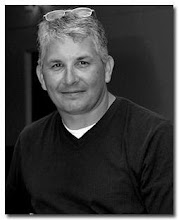Check this out! First lets chat quickly about the histogram. A histogram is basically the visual representation of exposure through the use of a distribution curve, visible on a digital camera. Here is a quick look at histogram 101. Pay close attention to the histogram of a good photo and an overexposed photo.
Histogram Down & Dirty
If you look at the bottom right point of the good photo's exposure distribution, it's at the very bottom before it runs off the right side of the screen. What this means is that the highlights (brightest part of this image) are not beyond 255. Now, if you look at the overexposed photo's distribution, the bottom right point where the exposure ends is way off the screen past the right side of the histogram's visibility. What this means is that the highlights are way past 255, which is the brightest part the sensor will read.
Now here's the objective, artificially add the bright part of the image (white towel) and set the lights so the brightest part of the image nudges close to the right side (255), but does not go past. A white textured towel is perfect for this, because it's not purely white and because it textured. The textured quality makes the towel less reflective, so you will have a little fudge factor to work with.
Setting the exposure? First thing to decide is at what aperture do I want to shoot this picture? The answer depends on what you want to accomplish, IE shallow depth of field may be great for portrait effect, where you may find f8-f16 is the sharpest aperture for your lens. It all just depends on what you want to accomplish with the image, but only you can decide this. Once you do decide, set your camera to manual mode, ISO at lowest setting, white balance to cloudy, and place your subject about 7 feet in front of the background. Set your aperture where you want for your image and have the subject hold up the white towel in front of them. Set your shutter to any number between 60-200 or max sync speed. If your using a zoom lens, sometimes 60 is too slow you get blur. Also, some cameras will sync to 250 or even 500. I always find 125-200 to be a good place to start.
Now, set your first light (Key Light). Grab your first light and place it off to the camera right, about 4 feet, and face it at a 45 degree angle towards your subject. Turn it on and take a picture of your subject holding the towel, with the camera settings you have already decided on. Check out the histogram. Move the light closer or farther away to the subject and continue to take images, until the histogram's bottom right point nudges close to the right point of the histogram screen. Your key light is now set.
New, set your 2nd light (fill light). Turn off your first light. Grab your second light and place it off to the camera left, about 4 feet, and face it at a 45 degree angle towards your subject. Turn it on and take a picture of your subject holding the towel, with the camera settings you have already decided on. Check out the histogram. Move the light closer or farther away to the subject and continue to take images, until the histogram's bottom right point nudges close to the right point of the histogram screen. Here's the fun part. Since this is your fill light, your objective is to have this light set a stop or two below the fill light to add a 3 dimensional look and depth to the image. The amount (ratio) pretty much is dependant on the look you are trying to achieve. Maby 1:2 for basic portrait, 1:3 for Rembrandt, etc. The Rembrandt style of lighting might require a two stop difference, where a traditional portrait might only require a 1 stop difference. Again, this is more a reflection of what you as a photographer are trying to achieve with the image. Now once both lights are balanced with exposure (1:1), move your fill light back about 3 feet. Now you can shoot some more images and continue to move the fill light back, until the right side of your histogram moves closer towards the middle to middle right.
Finally your ready to start having fun. Have your subject remove the towel, turn both lights on, get them looking awesome, and start firing beautiful images that will have perfect exposure!
This lighting explanation used only two lights and a basic portrait setup, but, the principles of exposure pretty much remain the same no matter how complex or creative your lighting is. Set your camera, then set each light individually, then adjust the light output to the appropriate level to get your desired lighting effect. Many lights have variable power settings and you can substitute reducing the lights power for moving the light back and forth in this example, if your lights have the capability. The ideas on exposure are the same, although the method of achieving it is a bit different.
As always, practice, practice, practice.
Hope this helps with your photography. On my next post, I'm going to outline the least expensive way to get started and learning external lighting, what's necessary and what's not.
Here's two examples that I shot with this exact setup.

1 comment:
You write very well.
Post a Comment